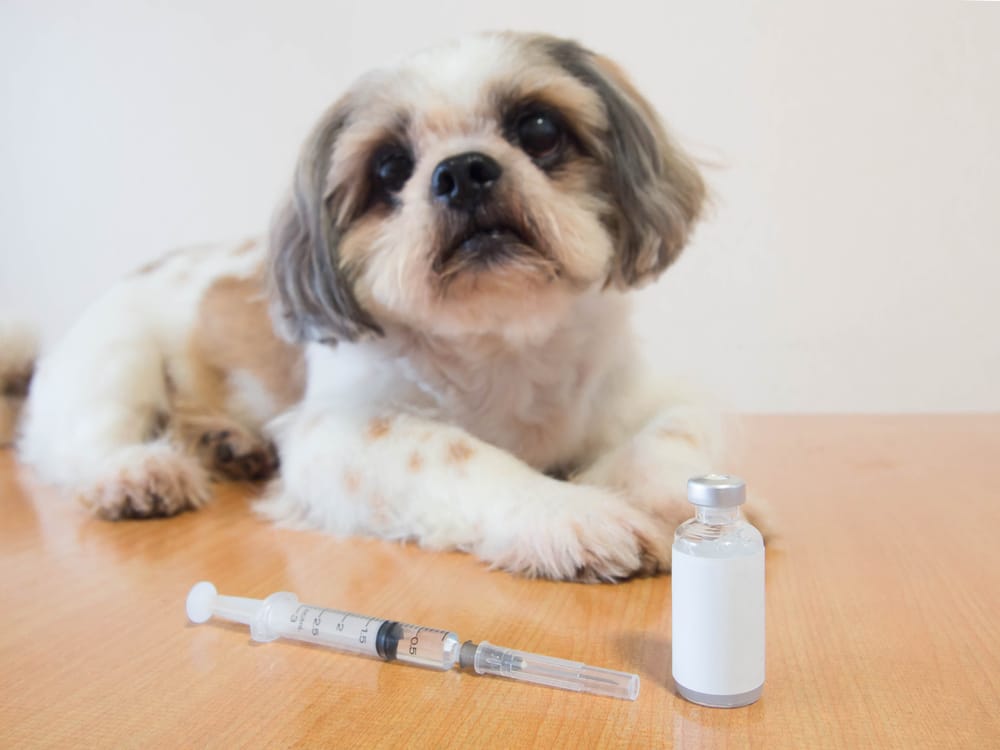There are a lot of owners whose pets have been diagnosed with this condition. And just as in humans, dogs are prone to getting it too. Even though diabetes mellitus (commonly known as just diabetes) can’t be cured, dogs with it can still have a pretty normal life. That is if their owners are committed to following the instructions that the vets have prescribed. So, what is canine diabetes mellitus?
Canine diabetes mellitus is a chronic disease that affects the metabolism of sugar in dogs. It is a condition that unfortunately can not be cured, but with proper diet and medication, it can be managed very well.
Table of Contents
A Few Words On Sugar Metabolism
Cells in canine bodies are powered by sugar. But the amount of sugar in the bloodstream needs to be properly managed. Too much sugar is just as bad as not enough sugar. This is controlled by an enzyme called insulin. Insulin is produced by one of the two different cells of the pancreas.
Sugar absorption starts from the mouth, but the biggest absorption happens when it reaches the intestines. From there, sugar enters the intestinal cells, and it is transformed into simple sugars, such as glucose. These simple molecules of glucose then pass into the bloodstream, and they are transported through the body to every single cell.
But in order for the glucose to enter the cell from the blood, it needs a little bit of help. And here comes the insulin. If, for any reason, there is not enough insulin in the body or the body is not able to use it, then the concentration of glucose in the blood will rise. This is a condition known as hyperglycemia. In order to try and maintain a normal concentration of sugar, the body will try to get rid of the excess amount through urine. But glucose needs a lot of water to be excreted, which is why dogs that have high glucose levels tend to drink a lot of water and urinate more frequently.
Types Of Diabetes Mellitus
In humans, there are two types of this disease. Let’s start with Type I.
Type I: Insulin-Deficiency Diabetes
In this type, the pancreas is not able to produce enough insulin, which can be the result of issues. In these cases, patients need a daily dose of an insulin top-up.
Type II: Insulin-Resistant Diabetes
This condition means that the pancreas produces enough insulin, but for some reason, the body is not using it as it should. The cells are ignorant to the presence of insulin, which results in inadequate transport of glucose inside the cells.
Both types of diabetes can occur in dogs, but it is harder to distinguish if we compare them to humans. However, it is believed that Type I is more common in the canine world.
Symptoms In Dogs With Diabetes Mellitus
There are early warning signs for this disease. Here’s what to look for.
Excessive Thirst
If your dog is drinking more water than normal, this could be a sign of this issue.
Increased Need To Go Potty
If a dog drinks a lot of water, it does not come as a surprise that they will want to go out to potty more often too.
They Seem To Be Hungry All The Time
Since the cells are not getting their glucose, they send a signal to the brain demanding more. That is why your dog has the desire to eat like it is the end of the world.
Weight Loss
Because, again, the cells are not getting glucose, they think that there is not enough. So, they make the body start and produce on its own. That is why dogs with diabetes could lose muscle mass and fat even though they are properly and regularly fed.
Diagnosis And Treatment Of Diabetes Mellitus

Vets are usually pretty good about knowing what might be causing the issues in your dog after they listen to you describing what you have noticed. But they do rely on some diagnostic tools so that they can confirm their initial thoughts. Blood samples can be used so the machines can measure the blood glucose levels in your dog, for example. Another way to determine this issue is when your vet asks you to collect some urine samples for testing. They look for a high level of glucose.
Once the diagnosis has been confirmed, your vet will come up with a treatment plan specifically tailored to your dog’s needs. There are several things they may suggest to you.
Diet
Your dog will most certainly need to have some diet changes. Vets will recommend food that is rich in protein, fiber, and complex carbohydrates. In some cases, you may be prescribed a low-fat diet food too.
Insulin Injections
Yes, your dog will need this for the rest of its life. But patients that get this thrive very well, and owners don’t have trouble giving the shot. Most of the time your dog won’t even know what happened.
Exercise
This means your dog needs to stay active but at a moderate level. It will need its daily walks but not too fast and certainly no wild animal-crazy kind of running.
Conclusion: What Is Canine Diabetes Mellitus?
Even though your dog gets this diagnosis, it is not the end of the world. Follow the vet’s instructions, and neither you or your dog will really feel much of a difference on a daily basis!
So, do you think your dog has canine diabetes mellitus? If you do, please take them to the vet, and let us know what’s going on in the comments below!
